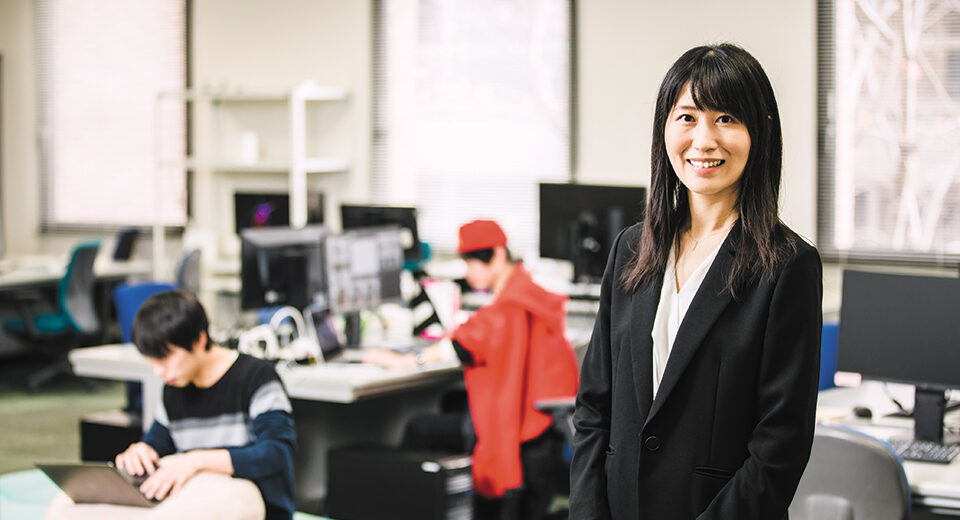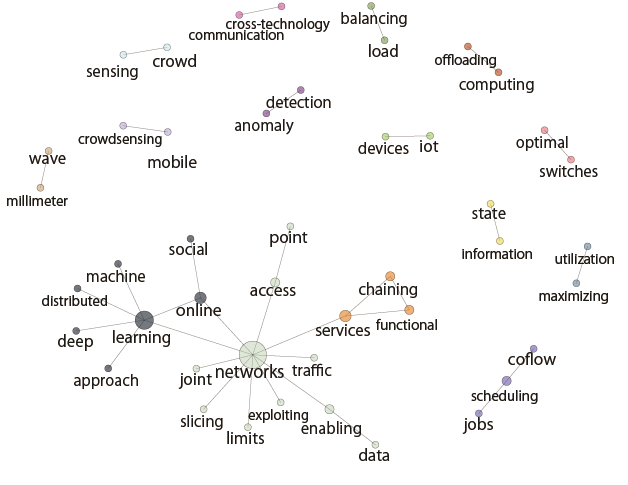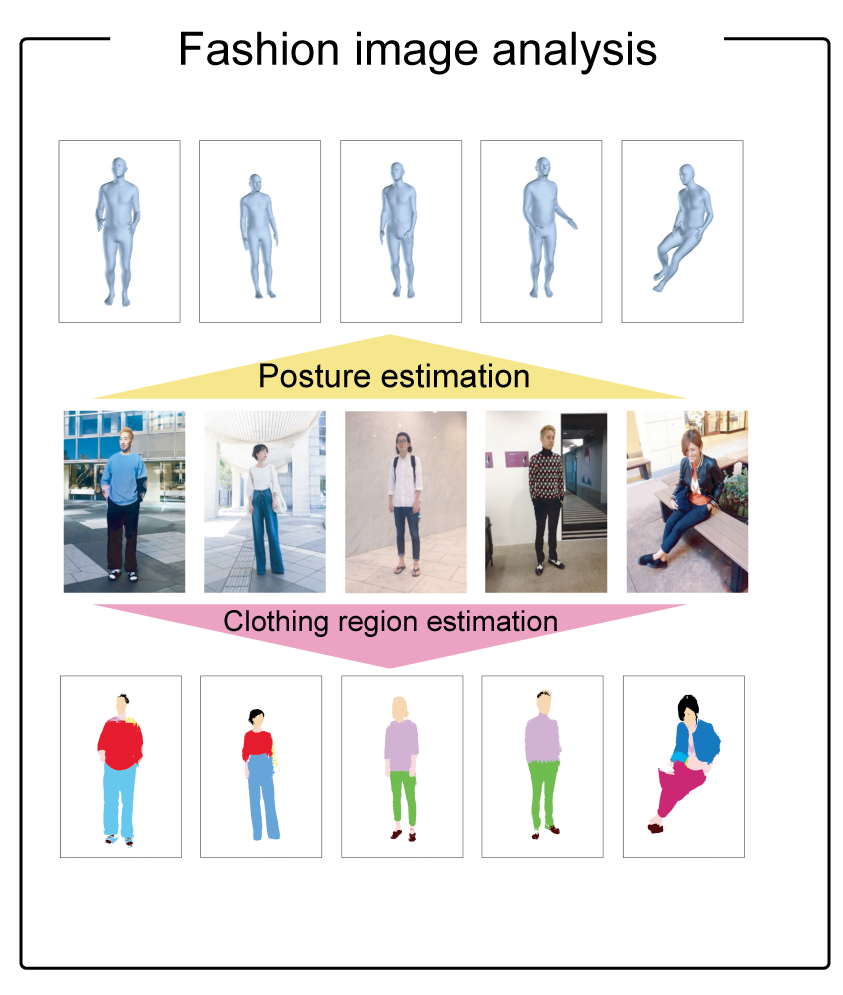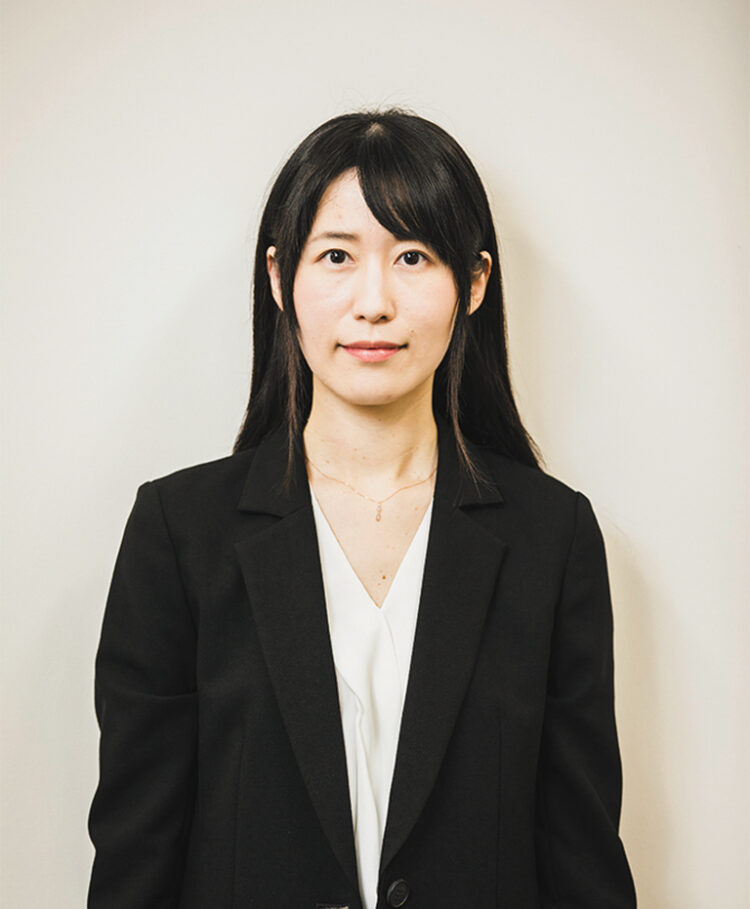Interview with researchers 5 Pioneering the Future of Intellectual-Creative Activities from the Information Analysis World

- Interview Marie Katsurai
- Assistant Professor, Faculty of Science and Engineering,
Department of Intelligent Information Engineering and Sciences
Visualizing research trends by fusing AI and open data
The ability for content to be shared easily by anyone using the internet has been around for quite some time now. In recent years, however, there has been a remarkable development in the realm of artificial intelligence (AI) technologies. Many new services that utilize AI and Big Data are becoming an integral part of our daily lives. Digital data has become essential for social development, and momentum is building towards open data even in academia. While an enormous amount of academic information is available over the web, are they instantly accessible to those who want to retrieve them when and how they wish? Is it not the case that such information may be contained within each community or that it takes an immense effort to collect the information? Amidst this reality, there is a researcher in the field of information science who is trying to envision a new society for the future through the fusion of AI and open data.
“I would like to contribute in such a way that they would continue to bring about new inspirations and intellectual-creative activities well into the future,” said Dr. Katsurai, an Assistant Professor at Doshisha University, who is proposing approaches to the analysis and assistance of intellectual-creative activities based on machine learning and data mining techniques. The primary themes she is engaged in relate to the visualization of research trends and researcher profiling through the automated aggregation of academic data. As to what triggered her interest, she said, “For the researchers to continue to make many innovations, I feel it is necessary to ‘cross-pollinate’ research and studies of various fields with one another. By the same token, I know from experience the importance of knowing what type of researchers are out there and what kind of research is being conducted. To jump over the tall barriers that stand between the various academic fields and ‘cross-pollinate’, I thought I would like to offer a system that would make information gathering easier.”

The current primary focus of her research, the visualization of research trends, succeeds in automatically extracting the answer to “what kind of research is currently trending” by analyzing the frequency of the occurrence of words in academic papers in a target field. A network between words is constructed by importing papers and academic journals from open data and implementing methods based on natural language processing and network analysis (Figure 1). Words that are highly correlated with one another are connected by lines to express a concept. “For example, in the field of drug development, it would take but a glance to see the research trends under the theme concerning Alzheimer’s disease,” she states. By comparing the latest data to that of the past, it is possible to discover the latest topic and elucidate the changes in research trends.
What served as the prerequisite for the above study was her other theme of researcher profiling. Information regarding researchers’ accomplishments is currently scattered across various websites, and there is no single database from which comprehensive information on a researcher could be found. Furthermore, when multiple researchers happen to share the same first and last name, it would be essential to take steps to verify which information belongs to which researcher. Therefore, Dr. Katsurai researched the technology that would automatically aggregate each researcher’s accomplishments from the web. She came up with a method to store the researcher’s specialties into a database and graphically display them and enable it to automatically suggest similar researchers. “If this research continues to unfold, it should become a great help for researchers and corporations to find a potential research collaborator,” she explained.
From 2019, she has begun working on her next theme, the creation of a series of knowledge graphs to discover common problems in different academic areas. When creating a team of collaborating researchers, the system will predict the most suitable combination and connect the researchers accordingly. She says that going forward, she will be able to provide indicators that promote communication between researchers in new academic fields.
Various approaches to a highly creative image analysis through a novel perspective

In terms of collaborative research with corporations, Dr. Katsurai is engaged in creating an innovative service that utilizes image analysis technologies. For example, with Stroly Inc., she is advancing research into ways to automatically sort analog maps, such as old maps and illustrates maps, by topic, and developing technology that will enhance the local information recommendation services. In addition, in the fashion field, she is currently developing an AI that has an understanding of the sense of fashion coordination, which utilizes Big Data. Conventional snap image recognition was limited to the estimation of the color, pattern, and type of clothing, but Dr. Katsurai focused on the fact that the sense of fit, or the clothing size, is also an element that has an impact on the impression of how well one is fashionably coordinated. She seeks to create an entirely new approach by adding new attributes, such as loose-fitting silhouettes or tight bottoms, by having an AI automatically recognize the impression of one’s silhouette (Figure 2).
Aiming to build momentum for interdisciplinary collaboration and relearning
Dr. Katsurai’s style is to find a research subject, consider its ideal form, and build an information analysis system towards that solution. Research that is born of original perspective is accelerating with the tailwind of the world’s push towards open data. While there is currently more weight put on the research content, the resulting product of such work, and the analysis of the impact that social relationships brings about in the completion process, she revealed that she would like to investigate ways to utilize the analyzed data. “Our society will see new developments in academia, arts, and industry once anybody and everybody can easily utilize various academic data. The most immediate goal is to create an environment where a researcher would not be at a loss if they change their research fields. I will contribute towards fostering the impetus for interdisciplinary collaboration and relearning.” Such is the vision of the future as can be envisioned by Dr. Katsurai, who, while handling the data and numbers that the AI formulates, places the human connections at the core of her research. Let us all look forward to the day this future arrives.

